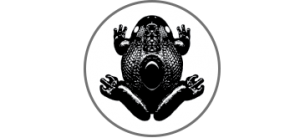Family Reunion
Some friends I met recently on a visit to Detroit, hanging out in the Detroit Institute of Art.
…
…
…
Some friends I met recently on a visit to Detroit, hanging out in the Detroit Institute of Art.
…
…
…
One of my favorite pieces in the Brooklyn Museum is the Likishi Dance Costume. I make time to see her whenever I visit.
Museum Text:
Likishi Dance Costume and Accessories (Mwana Pwevo)
Unidentified Luvale artist, late 19th or early 2oth century Northwest province, Zambia Fiber, wood, hide, metal, seedpods, bark, rope, hair, organic materialsThis complete dance costume shows how masks are normally one part of a larger ensemble. The mask is sewn directly onto the costume of looped bark and fiber, which fits tightly over the body of the dancer. Seedpod rattles and metal bells added a musical aspect to the performance.
Although they are danced by Luvale men, mwana pwevo masks depict women. In order to own and perform with a mask, a man had to symbolically marry it by paying the carver a copper ring as a bride price. In doing so, the dancer made a commitment to honor and care for the spirit represented in the mask. In return, the dancer was able to earn his livelihood performing at local festivals.
…
:::::::::::::::::::::::::::::::::::::::::::::::::::::::::::::::::::::::::::::::::::::::::::::::::::::::::::::::::::::::::::::::::::::::::::::::::::::::::::::::::::::::::::::::::::
I have reliquaries and “venus” figures on the brain…
:::::::::::::::::::::::::::::::::::::::::::::::::::::::::::::::::::::::::::::::::::::::::::::::::::::::::::::::::::::::::::::::::::::::::::::::::::::::::::::::::::::::::::::::::::
Studio shot of the paper mache reliquaries in process
[youtube=http://www.youtube.com/watch?v=I4vyF8xVBBY&hl=en_US&fs=1&]
Christopher working on the inside of “Flosshilde.”
:::::::::::::::::::::::::::::::::::::::::::::::::::::::::::::::::::::::::::::::::::::::::::::::::::::::::::::::::::::::::::::::::::::::::::::::::::::::::::::::::::::::::::::::::::
A few days ago I took a trip to the Metropolitan Museum of Art to do research.
:::::::::::::::::::::::::::::::::::::::::::::::::::::::::::::::::::::::::::::::::::::::::::::::::::::::::::::::::::::::::::::::::::::::::::::::::::::::::::::::::::::::::::::::::::
Outer Coffin of Kharushere
Virgin and Child Reliquary, French, 1170-1200
The Visitation, German, 1310-20
Bust of Saint Yrieix, French, 1220-40 (Made to house his skull)
:::::::::::::::::::::::::::::::::::::::::::::::::::::::::::::::::::::::::::::::::::::::::::::::::::::::::::::::::::::::::::::::::::::::::::::::::::::::::::::::::::::::::::::::::::
Voluptuous ladies from the past, your silhouettes still inspire.
:::::::::::::::::::::::::::::::::::::::::::::::::::::::::::::::::::::::::::::::::::::::::::::::::::::::::::::::::::::::::::::::::::::::::::::::::::::::::::::::::::::::::::::::::::
Venus of Lespugue (resides in France, at the Musée de l’Homme)
Venus of Willendorf (resides in Austria, at the Naturhistorisches Museum)
A Mother Goddess (resides in Turkey, at the Ankara Museum)
